When to Call a Plumber: 12 Most Common Plumbing Problems
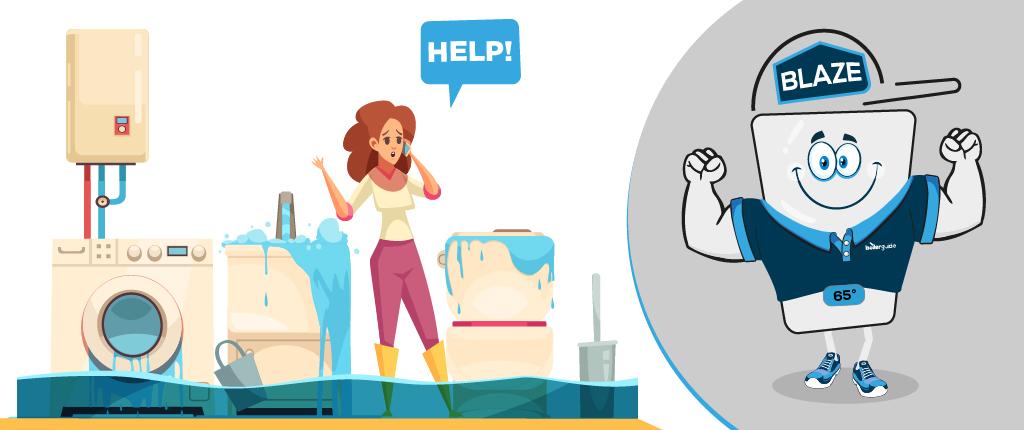
Your home could be hit by any number of plumbing problems.
Some can be tackled yourself but more often than not, you should contact a plumber. In this article we'll take you through the most common plumbing problems from no water to dripping taps.
12 common plumbing problems
These are the common plumbing problems that plumbers see time and time again.
- No water
- Dripping taps
- Toilet won't flush
- Toilet keeps running
- Blocked drain
- Weak water pressure
- Water leaks
- Sewer line backup
- Broken stopcock
- Noisy pipes
- Overflow pipe keeps running
- Gas leak (the plumber must be Gas Safe registered to work with gas)
Plumbing problems such as no running water, leaks and sewer line backup are all considered plumbing emergencies. Which means you should call out an emergency plumber as soon as you spot the issue – whether it’s day or night.
Now, let's take a look at each of these plumbing problems to find out how we can fix them.
1. No water
No running water is the last thing you want.
The first thing you should do is check all of the taps around your home. If water is running from some taps but not others then there's a problem with the plumbing rather than the mains water supply.
No running water from any taps suggests an issue with the supply to your home. The quickest way to find out is by asking your neighbours. If they don't have running water either then it's time to give your supplier a call. If they do have water then you need to look a little closer to home.
The best place to start is with the stopcock. The stopcock is the main water valve to your property which allows water to flow through the pipes to the taps. It's normally found close to the kitchen sink and looks a lot like a tap without a faucet.
If the stopcock is closed then your property won't get any water. Turn the valve anti-clockwise to open it up and the water will start flowing again. If the stopcock was already open then there's an issue somewhere else with the plumbing.
One possible cause is a leak. At the first sign of a leak you should turn off the water supply. You'll then need a plumber to fix the broken pipe.
If your water has stopped running after a period of freezing weather then one or more pipes may have frozen. The most likely to freeze is the condensate pipe which leads waste water from your boiler out of your home. If it freezes then this causes a blockage and your boiler will shut down. You can thaw it out by pouring warm (not boiling) water over the frozen part of the pipe.
2. Dripping taps
A dripping tap could be wasting more than five gallons of water a day. So, if you don't do anything about it, you'll soon notice your water bills going up. Common causes are the wearing out of key parts such as the washer, valve or rubber seals. And they'll most likely need to be replaced.
More often than not, it's the washer that wears out. When you turn a tap on, the washer lifts up to allow water to flow from the faucet. It then blocks water from making its way out when you turn the tap off again.
So, if the washer was to wear out or crack, water would be able to get through even when the tap is off, causing a drip. Fortunately, replacing a washer is a quick job for an experienced plumber.
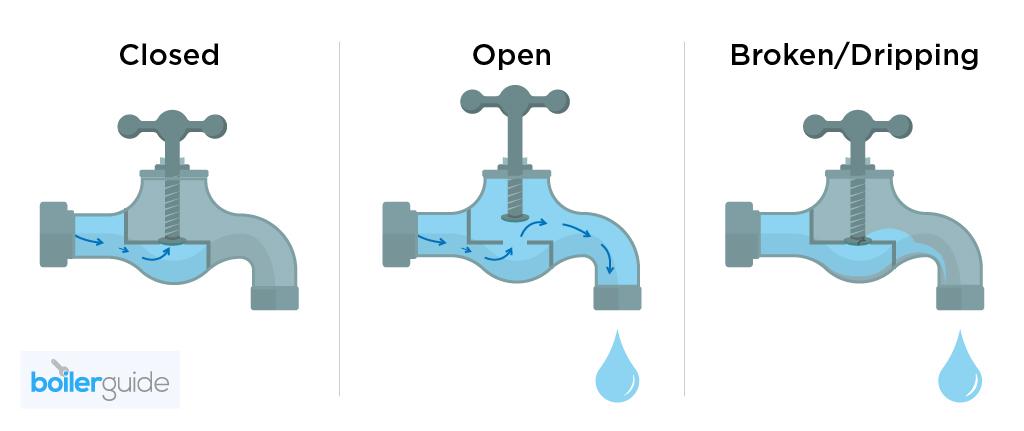
3. Toilet won’t flush
One of the most common plumbing issues is a toilet that won't flush.
There are a few causes and one of the quickest to fix is a broken flushing handle. When you flush the toilet a flapper in the tank should rise up. This allows water into the bowl. If the chain which connects the flush with the flapper has broken then the toilet won't flush.
The most likely cause is a lack of water in the tank. To check, lift the lid off the tank and take a look at the water level. Ideally, it should be around an inch below the overflow pipe. Any lower and it will need topping up.
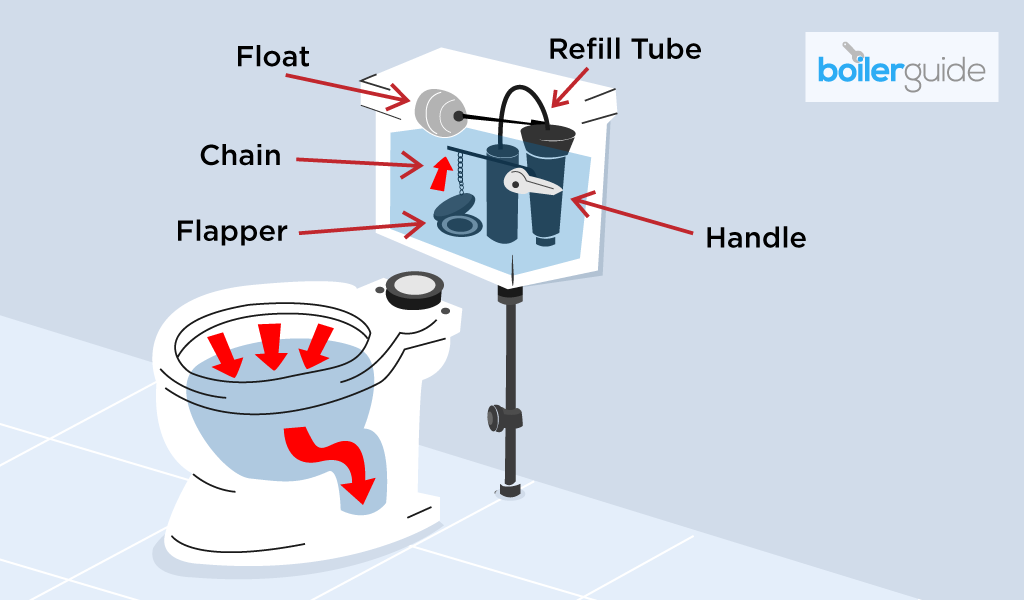
Ball and arm float
Adjust the height of the float by turning the screw that connects the float to the fill valve clockwise. Once you're happy, flush the toilet and check the water level in the tank.
Replace the fill valve
The fill valve connects the toilet tank to the mains water supply. When you flush the toilet, the fill valve opens as the float drops to the bottom of the tank. This allows water into the tank until the float reaches a set height.
If the fill valve is broken, the tank won't be filling up with water. It may just be full of debris and need cleaning out but you'll most likely need a new fill valve fitted.
4. Toilet keeps running
A toilet that won't stop running should be thought of as a leak. And it can happen for one of a few reasons:
- It's time for the flapper (which controls the volume of water released into the bowl) to be replaced
- The float ball is too low or being blocked
- The refill tube isn't short enough
Replacing the flapper
When you flush the toilet, the flapper in the tank lifts up to allow water into the bowl. When it's let enough water through, it drops back down to seal up the tank. So if the flapper breaks or wears out with age, water will continue to run into the bowl of the toilet from the tank.
The good news is that they're easy to replace – especially for a professional. And they can only cost £5 to £10.
It could be the case that the flapper is at fault but it isn't broken at all. In this case, the chain within the tank might be too long and has ended up stuck under the flapper, preventing it from closing.
Increasing the height of the float ball
Many toilet tanks will have a float ball. This is a plastic balloon that's attached to the end of a float arm and floats on top of the water.
In a properly working toilet, it will stop flushing once the float ball has floated up to a set height. If the float arm is positioned too low or the ball is being blocked from rising up then the toilet will keep running.
To check if this is the problem, lift the float arm. If the flushing stops then you've found the cause. You may find that the float ball has a crack, causing it to fill with water. If this is the case, you'll need a new float ball.
Shortening the refill tube
The job of the refill tube is to fill the toilet with water after the flush by sending water down the overflow tube. It's a small bendy tube that's connected to the fill valve and hangs over the overflow tube.
If it isn't hanging perfectly over the overflow tube then your toilet won't stop running. And this could be for one of two reasons. Either the refill tube has moved slightly and needs putting back into place or it's too long. If it's too long then simply snip the end off so that it hangs perfectly over the overflow tube.
5. Blocked drain
A blockage in the pipes can lead to slow drainage, waste backing up into your home and low water pressure.
Common causes of blocked drains include food waste, hair and wet wipes. But sometimes nature can get in the way too thanks to fallen leaves and tree roots.
There are products designed to clear blockages as well as natural remedies such as boiling water and baking soda. It’s also possible to remove certain pipes and take the blockage out by hand. Or, you could use a plunger.
However, in the case of tree roots, you will need a plumber.
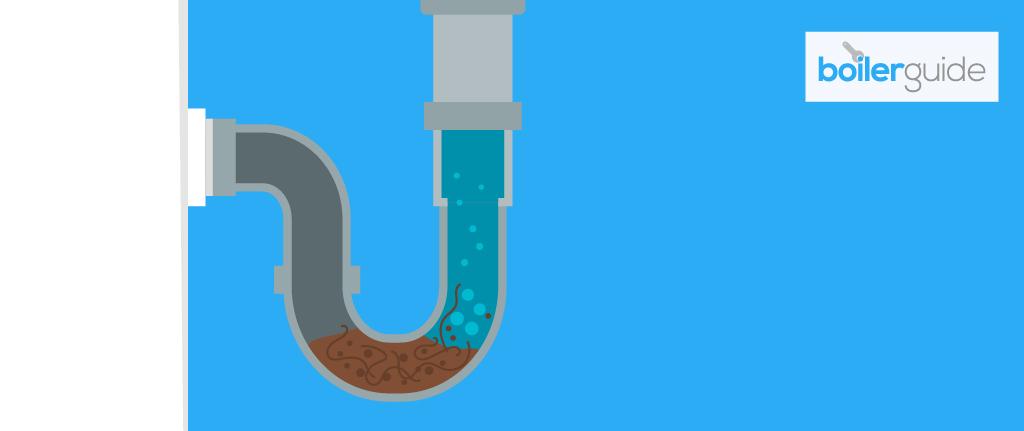
6. Water leaks
Even the smallest leak can grow to cause some serious damage to your property. There are many reasons why your pipes might start leaking:
- Blockages
- Loose connections
- Broken seals
- Corrosion
- High water pressure
Rather than worrying too much about the cause at first, you should turn off the water supply as quickly as possible. Then get on the phone to an emergency plumber.
7. Weak water pressure
Low water pressure in your property is a sign of an issue with your pipes. If you spot a leak (even a small one) turn off the mains water supply.
If you're only getting weak pressure from a few taps then the aerator on the faucet may need a good clean. Otherwise, it could be time to fit new taps or showerheads.
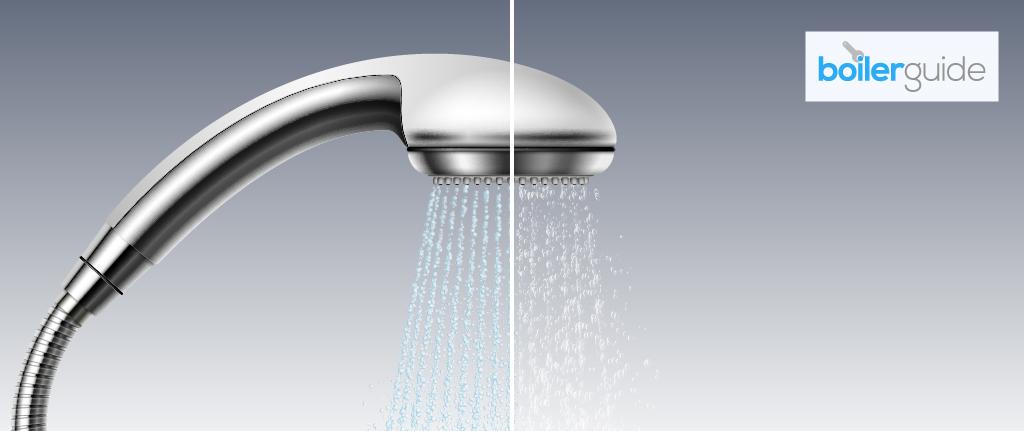
8. Sewer line backup
Our homes are fitted with pipes that bring fresh water in and pipes that take the dirty water away to the sewers.
The last thing you want is for dirty water to come back into your home from the wastewater line. But this is exactly what can happen if there's a blockage in the waste pipe.
A plunger is the best place to start when clearing a blockage in the waste pipe. But if the pipes are damaged or tree roots are in the way, you won't have any luck. That's why your best bet is to call out a plumber.
9. Broken stopcock
![]()
The stopcock controls the flow of water into your home. It can either be open (allowing water into your home) or closed (preventing water from flowing into your home. The only times you'll want to close the stopcock is if there's a broken pipe or a leak. Other than that, the stopcock can remain open.
As they don't need turning very often, the stopcock valve can cease up over time. It is often possible to loosen it but replacing it can be the better option.
A leaking stopcock is more likely to need replacing. If you can, turn the stopcock clockwise to close it and shut off the water supply. This should stop the leak. Then it's a good idea to call out a plumber who can either fix, or more likely, replace the broken stopcock.
10. Noisy pipes
Have you noticed your pipes getting noisier? Then that's a strong sign that something is wrong. And it could be one of a few things: high water pressure, clogged pipes or loose fittings.
High water pressure can cause a lot of damage to the pipes around your home. And this can lead to leaks. It can also wear out taps, meaning that you'll have to replace them much sooner.
The first thing you'll want to do if you suspect high water pressure is to contact your supplier. Following that, it could be worth asking a plumber to fit a pressure regulator. This will monitor the water pressure in your home and make sure that it doesn't get too high.
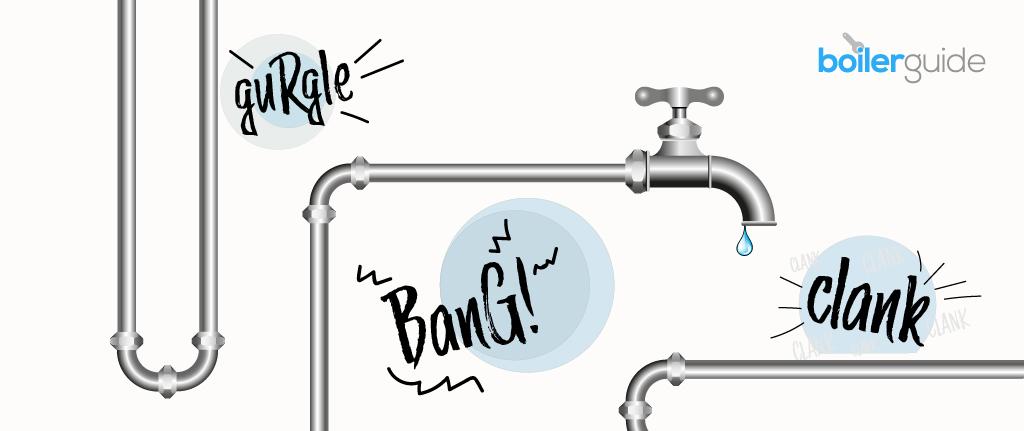
11. Overflow won't stop running
An overflow pipe is essentially there to stop your house from flooding. Sinks, for example, have an overflow an inch or so down from the top of the basin to stop water from flowing over the edge. Other appliances with an overflow pipe include:
- Baths
- Boilers (the condensate pipe)
- Toilet tanks
- Water cylinders
- Feed and expansion tanks
If the overflow pipe keeps running then this can cause leaks and flooding. And the most likely culprit is the float valve.
The role of the float valve is to prevent tanks around the home from filling up with too much water. So if the float valve breaks, the tank won't stop filling with water and the overflow pipe will keep running.
A float valve is a small ball on the end of a long piece of plastic or metal. They're most commonly seen in toilet tanks. Something could be blocking the arm from moving up and down or the ball may have cracked and filled with water – weighing it down.
12. Gas leak
A plumber who is Gas Safe registered can also work on gas appliances. And many do hold this qualification.
Faulty gas appliances like boilers and stoves can emit a dangerous gas called carbon monoxide. This is an odourless, colourless and tasteless gas which can be lethal. It's important that a carbon monoxide alarm is fitted close to your gas boiler and is checked on a regular basis.
If you smell gas then you should open up all the doors and windows then leave the property. Once you're outside, give the Gas Emergency Services a call on 0800 111 999 (England) or 0800 002 001 (Scotland, Wales and Northern Ireland).
To keep your home safe from gas leaks, your gas appliances should be serviced by a Gas Safe registered engineer once a year. Book a gas boiler service today.
How to spot the signs of plumbing problems early
Spotting a plumbing issue early on can save you time, money and a lot of hassle. These are a few things to look out for:
- Gurgling
- Slow drainage
- Consistently clogged toilets
- Noisy pipes
- Higher water bills
It's worth giving a plumber a call when you notice any of the above. Otherwise, things could only get worse.
Costs of fixing common plumbing problems
There's no one answer to how much a plumber will cost. That's because your final bill will depend on the job, the time it takes to finish and the rates charged by the plumber.
Many plumbing problems can be fixed within a few hours. And this means the plumber will set an hourly rate which normally falls somewhere between £40 and £60. Bigger jobs can take a few days which will see the plumber charge their day rate. The average day rate of plumbers in the UK is between £320 and £375*.
There will be additional costs based on the type of job and whether replacement parts are needed. Prices will also be higher if you need an emergency plumber.
| Plumbing job | Average cost |
|---|---|
| Unblocked Toilet | £75 – £150 |
| Repair Burst Pipe | £50 – £140 |
| Fix a Leak | £77 – £128 |
| Install a radiator | £150 – £180 |
Data obtained as per reference
Costs can be higher than those in the table depending on the size of the issue and how long it will take to repair.
Time to find a plumber
The best way to fix all of these plumbing problems is by hiring a professional plumber. And you can get a list of trusted plumbers in your area right here on Boiler Guide. Simply head over to our directory and tap on your area. There you'll get a list of local plumbing companies all ready to take your call.
Reference
*Checkatrade, Plumber Cost Guide (2022)



